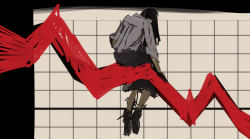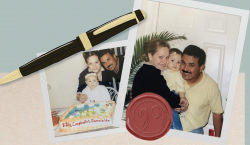Every once in a while, people must have somewhere to go to be free—to be outside their own minds, and to enter that of someone else. And so they come to a temple of art and beauty, where they whisper in hushed tones, fearing that their voices might create an echo; where some wander and amble, mentally marking the walls with their impressions as they pass, and others harden into statues on temporary display, wondering at the same wall for hours.
This is what we call a museum, a gallery, an exhibition. This is where we come to feel and listen to what our eyes see, to find characters and worlds and stories and, ultimately, to find ourselves in something outside of us.
So at the end of this past year, I took a trip to the Metropolitan Museum of Art in New York City, to revisit the varicolored worlds of Degas’ ballet studios, Monet’s gardens, and Cassat’s urban women and children at home, at teatime, reading, and knitting.
Of course, I also went to find undiscovered territory, worlds I had never known. I found it, this time, along the edge of a very white wall, not entirely alone or under-admired, but with two glaring lamppost lights for eyes, calling for a greater attentiveness, a greater intensity, a higher respect. It is the world of Charles Demuth’s painting, “The Figure 5 in Gold,” a visual representation of William Carlos Williams’s poem, “The Great Figure.” It is small but piercing, and depicts Willams’s phrases, “the figure 5/in gold/on a red/fire truck/moving.”
I looked beyond the raging red rectangles, the burning orange “5,” and into its flashing round eyes for long enough and it let me in, and took me with it. It brought me into the walls of its dream city, set me down on its rain-drenched, deserted sidewalks, beneath its dark sky, and I walked in the shadows of the towering lamplights, and balance along the edge of the concrete like a trapeze artist rehearsing in a large, empty room. I wandered into the vacant canal of that black tar street, down the middle, along those sharp-edged, white, dotted lines.
And when the fire truck came, with its gilded number five and its sparkling red and white refracting headlights, I was the only one there to hear it and to see it. It came fast, and loud, and tense. Its wheels roared and spun, the road moaned under its weight, a ladder clattered against the side of the truck. It flickered down the street, and I stood in the blinking lights and the screaming horns. And out of the blinding lights and the clanging, howling sirens of that lonely, explosive night, its gilded number five came at me and came at me and came at me.
And when that number five was too close to see, the night was over, and I retreated from my retreat, and returned to where I was—the room full of whispering people, and women’s heels hitting slow and stalled against the hardwood floor, and guards propped against the sides of archways.
There is no need to come to the Met—or any museum—equipped with an itinerary, a list of works you absolutely must see. You may never find what you are looking for, and you may never leave the hall of white walls and whispering people. You need only follow your five senses, and your five senses need only follow your imagination. They will take you away, on Hokusai’s great wave, to Rousseau’s exotic jungles, to Hopper’s 1920 American café, to the edge of Munch’s sinister bridge, where you will peer into still, reflecting water, and where you will find yourself outside of yourself.




